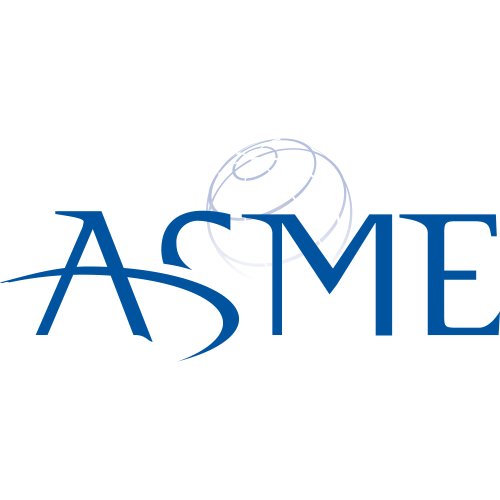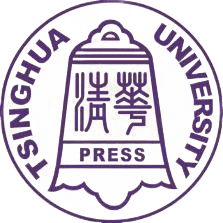Open Access


Toward garnet electrolyte–based Li metal batteries: An ultrathin, highly effective, artificial solid-state electrolyte/metallic Li interface
Kun (kelvin) Fu
1, 2
,
Yunhui Gong
1, 2
,
Boyang Liu
2
,
Yizhou Zhu
2
,
Shaomao Xu
1, 2
,
Yonggang Yao
2
,
Wei Luo
2
,
Chengwei Wang
1, 2
,
Steven D Lacey
2
,
Jiaqi Dai
2
,
Yanan Chen
2
,
Yifei Mo
1, 2
,
Eric Wachsman
1, 2
,
Liangbing Hu
1, 2
Publication type: Journal Article
Publication date: 2017-04-07
scimago Q1
wos Q1
SJR: 4.324
CiteScore: 19.6
Impact factor: 12.5
ISSN: 23752548
PubMed ID:
28435874
Multidisciplinary
Abstract
Strategy to change the wettability of the solid-state electrolyte against Li and reduce interface resistance. Solid-state batteries are a promising option toward high energy and power densities due to the use of lithium (Li) metal as an anode. Among all solid electrolyte materials ranging from sulfides to oxides and oxynitrides, cubic garnet–type Li7La3Zr2O12 (LLZO) ceramic electrolytes are superior candidates because of their high ionic conductivity (10−3 to 10−4 S/cm) and good stability against Li metal. However, garnet solid electrolytes generally have poor contact with Li metal, which causes high resistance and uneven current distribution at the interface. To address this challenge, we demonstrate a strategy to engineer the garnet solid electrolyte and the Li metal interface by forming an intermediary Li-metal alloy, which changes the wettability of the garnet surface (lithiophobic to lithiophilic) and reduces the interface resistance by more than an order of magnitude: 950 ohm·cm2 for the pristine garnet/Li and 75 ohm·cm2 for the surface-engineered garnet/Li. Li7La2.75Ca0.25Zr1.75Nb0.25O12 (LLCZN) was selected as the solid-state electrolyte (SSE) in this work because of its low sintering temperature, stabilized cubic garnet phase, and high ionic conductivity. This low area-specific resistance enables a solid-state garnet SSE/Li metal configuration and promotes the development of a hybrid electrolyte system. The hybrid system uses the improved solid-state garnet SSE Li metal anode and a thin liquid electrolyte cathode interfacial layer. This work provides new ways to address the garnet SSE wetting issue against Li and get more stable cell performances based on the hybrid electrolyte system for Li-ion, Li-sulfur, and Li-oxygen batteries toward the next generation of Li metal batteries.
Found
Nothing found, try to update filter.
Found
Nothing found, try to update filter.
Top-30
Journals
|
5
10
15
20
25
30
35
40
45
|
|
|
ACS applied materials & interfaces
42 publications, 5.54%
|
|
|
Energy Storage Materials
42 publications, 5.54%
|
|
|
ACS Applied Energy Materials
32 publications, 4.22%
|
|
|
Advanced Energy Materials
31 publications, 4.09%
|
|
|
Journal of Materials Chemistry A
31 publications, 4.09%
|
|
|
Advanced Materials
28 publications, 3.69%
|
|
|
Advanced Functional Materials
26 publications, 3.43%
|
|
|
ACS Energy Letters
19 publications, 2.51%
|
|
|
Journal of Power Sources
18 publications, 2.37%
|
|
|
Journal of the Electrochemical Society
16 publications, 2.11%
|
|
|
Angewandte Chemie
16 publications, 2.11%
|
|
|
Angewandte Chemie - International Edition
16 publications, 2.11%
|
|
|
Nano Energy
14 publications, 1.85%
|
|
|
Electrochimica Acta
14 publications, 1.85%
|
|
|
Chemical Engineering Journal
12 publications, 1.58%
|
|
|
Small
11 publications, 1.45%
|
|
|
Joule
11 publications, 1.45%
|
|
|
Nano Letters
10 publications, 1.32%
|
|
|
Advanced Science
10 publications, 1.32%
|
|
|
Ceramics International
9 publications, 1.19%
|
|
|
Energy and Environmental Science
9 publications, 1.19%
|
|
|
Journal of the American Chemical Society
8 publications, 1.06%
|
|
|
Chemistry of Materials
8 publications, 1.06%
|
|
|
Electrochemical Energy Reviews
8 publications, 1.06%
|
|
|
Batteries & Supercaps
8 publications, 1.06%
|
|
|
Chemical Reviews
7 publications, 0.92%
|
|
|
ACS Nano
7 publications, 0.92%
|
|
|
Nature Communications
6 publications, 0.79%
|
|
|
Journal of Materials Science
6 publications, 0.79%
|
|
|
5
10
15
20
25
30
35
40
45
|
Publishers
|
20
40
60
80
100
120
140
160
180
200
|
|
|
Wiley
196 publications, 25.86%
|
|
|
Elsevier
193 publications, 25.46%
|
|
|
American Chemical Society (ACS)
153 publications, 20.18%
|
|
|
Royal Society of Chemistry (RSC)
77 publications, 10.16%
|
|
|
Springer Nature
52 publications, 6.86%
|
|
|
The Electrochemical Society
16 publications, 2.11%
|
|
|
MDPI
15 publications, 1.98%
|
|
|
American Association for the Advancement of Science (AAAS)
6 publications, 0.79%
|
|
|
Frontiers Media S.A.
4 publications, 0.53%
|
|
|
Nonferrous Metals Society of China
4 publications, 0.53%
|
|
|
Taylor & Francis
4 publications, 0.53%
|
|
|
AIP Publishing
2 publications, 0.26%
|
|
|
ASME International
2 publications, 0.26%
|
|
|
Higher Education Press
2 publications, 0.26%
|
|
|
World Scientific
2 publications, 0.26%
|
|
|
Tsinghua University Press
2 publications, 0.26%
|
|
|
Proceedings of the National Academy of Sciences (PNAS)
2 publications, 0.26%
|
|
|
OAE Publishing Inc.
2 publications, 0.26%
|
|
|
Bentham Science Publishers Ltd.
1 publication, 0.13%
|
|
|
Canadian Science Publishing
1 publication, 0.13%
|
|
|
The Electrochemical Society of Japan
1 publication, 0.13%
|
|
|
Korean Ceramic Society
1 publication, 0.13%
|
|
|
Wuhan University of Technology
1 publication, 0.13%
|
|
|
Chinese Ceramic Society
1 publication, 0.13%
|
|
|
Taiwan Institute of Chemical Engineers
1 publication, 0.13%
|
|
|
Korean Society of Industrial Engineering Chemistry
1 publication, 0.13%
|
|
|
Japan Society of Applied Physics
1 publication, 0.13%
|
|
|
IOP Publishing
1 publication, 0.13%
|
|
|
Social Science Electronic Publishing
1 publication, 0.13%
|
|
|
20
40
60
80
100
120
140
160
180
200
|
- We do not take into account publications without a DOI.
- Statistics recalculated weekly.
Are you a researcher?
Create a profile to get free access to personal recommendations for colleagues and new articles.
Metrics
758
Total citations:
758
Citations from 2024:
141
(18%)
Cite this
GOST |
RIS |
BibTex
Cite this
GOST
Copy
Fu K. (. et al. Toward garnet electrolyte–based Li metal batteries: An ultrathin, highly effective, artificial solid-state electrolyte/metallic Li interface // Science advances. 2017. Vol. 3. No. 4.
GOST all authors (up to 50)
Copy
Fu K. (., Gong Y., Liu B., Zhu Y., Xu S., Yao Y., Luo W., Wang C., Lacey S. D., Dai J., Chen Y., Mo Y., Wachsman E., Hu L. Toward garnet electrolyte–based Li metal batteries: An ultrathin, highly effective, artificial solid-state electrolyte/metallic Li interface // Science advances. 2017. Vol. 3. No. 4.
Cite this
RIS
Copy
TY - JOUR
DO - 10.1126/sciadv.1601659
UR - https://doi.org/10.1126/sciadv.1601659
TI - Toward garnet electrolyte–based Li metal batteries: An ultrathin, highly effective, artificial solid-state electrolyte/metallic Li interface
T2 - Science advances
AU - Fu, Kun (kelvin)
AU - Gong, Yunhui
AU - Liu, Boyang
AU - Zhu, Yizhou
AU - Xu, Shaomao
AU - Yao, Yonggang
AU - Luo, Wei
AU - Wang, Chengwei
AU - Lacey, Steven D
AU - Dai, Jiaqi
AU - Chen, Yanan
AU - Mo, Yifei
AU - Wachsman, Eric
AU - Hu, Liangbing
PY - 2017
DA - 2017/04/07
PB - American Association for the Advancement of Science (AAAS)
IS - 4
VL - 3
PMID - 28435874
SN - 2375-2548
ER -
Cite this
BibTex (up to 50 authors)
Copy
@article{2017_Fu,
author = {Kun (kelvin) Fu and Yunhui Gong and Boyang Liu and Yizhou Zhu and Shaomao Xu and Yonggang Yao and Wei Luo and Chengwei Wang and Steven D Lacey and Jiaqi Dai and Yanan Chen and Yifei Mo and Eric Wachsman and Liangbing Hu},
title = {Toward garnet electrolyte–based Li metal batteries: An ultrathin, highly effective, artificial solid-state electrolyte/metallic Li interface},
journal = {Science advances},
year = {2017},
volume = {3},
publisher = {American Association for the Advancement of Science (AAAS)},
month = {apr},
url = {https://doi.org/10.1126/sciadv.1601659},
number = {4},
doi = {10.1126/sciadv.1601659}
}































